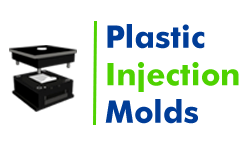- Mould Manufacturer
- Tooling
- Moulding Die
- Plastic Molding
- Plastic Injection Molding
- Injection Molding
- Nylon Injection Molding
- Injection Moulding
- Custom Injection Molding
- Injection Mould
- Injection Mouldings Process Manufacturers
- Medical Injection Molding
- Polycarbonate Injection Moulding
- Rapid Injection Moulding
- Injection Molds
- Injection Molding Cost
- Injection Molding Suppliers
- Injection Moldings
- HDPE Molding
- Metal Injection Molding
- Rubber Injection Molding
- Mold Designing
- Prototyping
- Automotive Injection Molding
- Blow Molding
- 3D Printing
Enjoy the Highly Sophisticated Privileges of Using polyjet 3d printing
Polyjet is one of the most amazing rapid prototyping technology, which is new in the market. The process combines a high accuracy level with the possibility of combining more than one material in the same print. Furthermore, you can now use the technology to mix different materials and create unique digital materials that exhibit completely new characteristics instead of individual characteristic features of the components.
Key features
The polyjet 3d printing is indeed a revolutionary modernization of technology where you will get more accuracy, strength, and durability of the prototypes.
- The technology is making it possible to print using transparent resin. You will realize the importance when you have to print distinct white and black structures inside a transparent shell.
- The feature is aiding in the visualization of complex biological structures, which is making it possible to make steady progress in the medical world too.
- A high level of accuracy reduces the chances of flaws.
Better quality of the models with 3d printing polyjet
Polyjet is quite similar to stereolithography or the SLA method of 3D printing. Both the procedures use photopolymers and utilize the energy of the UV rays to cure the plastics. However, the 3d printing polyjet is essentially the dominant choice when it comes to accuracy and intricacy.
- Applying the technology, you can now deposit materials in layers as fine as 16 microns to deliver models that possess incredibly complex geometries and dimensions.
- You can achieve exceptional detailing of the inner structure of any model, and the surface smoothness will be high to maintain the accuracy level of the sophisticated models and prototypes.
Choice of materials
Polyjet is ready to cover all your needs. Just name the material, and you can achieve it. The technology accounts for implementing the designs on rigid, opaque, transparent, flexible, and even the combination of all such materials.
- Heat resistance is a primary requirement when you are preparing the prototype for the aerospace or automotive industries. Polypropylene 3d printing allows you to puck the right choice of materials to get the necessary heat resistance.
- Think about the production of rubber-like parts for the motor racing industry. To make efficient and strong prototypes, which should ideally be the closest to the end product, you must apply the best technology.
Using multiple colors
Are you planning to make the prototype for a model that should look better in a colored version? Keep the note of the parts that correspond to a color. Then applying the printing polycarbonate will be ideal as it will give you the freedom to how the intricate parts using different colors. And the model will be the replica of the final object. Top-class aesthetics and unmatched realism of the prototype are the special benefits of using this particular technology.
FAQ
- Q1. What Is PolyJet Used For?
PolyJet technology is utilized for rapid prototyping and additive manufacturing. It enables the creation of high-resolution, multi-material parts with smooth surfaces, making it ideal for producing detailed prototypes, intricate models, and functional components. PolyJet printers jet layers of liquid photopolymer that are cured with UV light to build the desired object.
- Q2. Is PolyJet A SLA?
PolyJet is not SLA (Stereolithography). PolyJet is an additive manufacturing technology developed by Stratasys that uses photopolymers cured with UV light. It works by jetting layers of liquid resin onto a build platform and curing them with UV light, creating highly detailed and multi-material prototypes.
- Q3. What Is The Difference Between PolyJet And FDM?
PolyJet technology employs liquid photopolymers cured with UV light layer by layer, offering high precision and multiple material options. Fused Deposition Modeling (FDM) utilizes thermoplastic filaments melted and extruded layer by layer, providing robustness and cost-effectiveness. FDM generally has larger build volumes and lower material costs compared to PolyJet.







.webp)

